DHI
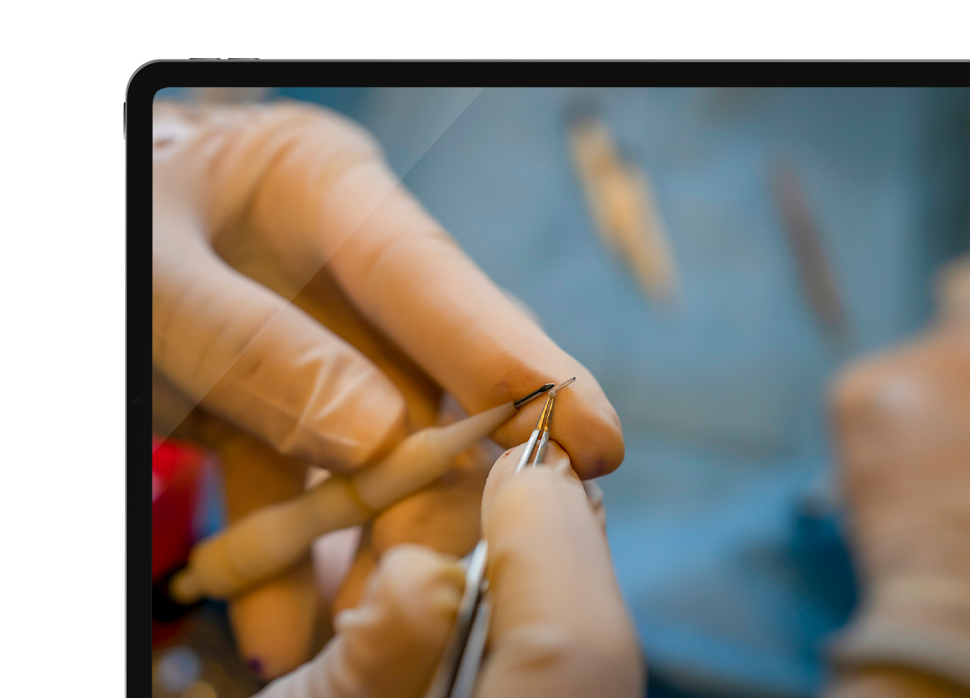
DHI (Direct Hair Implantation)
DHI (Direct Hair Implantation) is not a new technique. In fact, it’s an improved version of FUE hair implantation, encompassing the same procedural steps and outcomes. In a FUE hair transplant, the doctor creates channels over the recipient area using sapphire blades and places the grafts into the opened channels. In contrast, the DHI method employs a tool resembling a ballpoint pen to insert the grafts into the recipient area without creating any channels. This tool is called the Choi pen.Let us examine the process of DHI. A DHI hair transplant is performed using a Choi pen during implantation. This compact device, shaped like an interlocking ballpoint pen, has an outer Teflon coating and is designed to withstand temperatures of up to 130 degrees Celsius. The needle at the end of the pen is used to place the grafts. The needle resembles an injector but is vertical, with serrated endpoints. The serrated ends are designed in this way to facilitate the placement of hair grafts into the needle prior to the transplant.TIn the DHI hair transplant technique, 4 to 6 Choi pens are used, classified by color into red, blue, and white, according to the graft sizes, which are categorized as thick, medium, and thin. This method consists of three main stages:
Stage One: Hair Follicle Extraction
The process begins by identifying the donor area, usually located at the back or sides of the scalp, where hair follicles are more resistant to shedding. A precise device called a micro motor is used to extract individual hair follicles without causing large wounds or visible scars. Each follicle is carefully extracted to preserve its integrity and ensure its effectiveness for transplantation.
Stage Two: Follicle Preparation and Preservation
Immediately after extraction, the follicles are placed in a specialized medical solution designed to maintain their vitality and activity. This solution helps reduce dehydration and increases the chances of a successful transplant. The follicles are then sorted based on the number of hairs per follicle (e.g., single, double, or multiple hairs). This classification aids in meticulous planning of the transplantation, ensuring the most suitable follicles are selected for each scalp area, considering hair density and natural appearance.
Stage Three: Loading Follicles into Choi Pens and Implantation
The follicles are transferred from the solution into the Choi pen, a specialized tool equipped with a very fine needle at its tip. A trained team carefully loads each follicle into the needle, taking great care not to damage the follicles during the process. The specialist then implants the follicles directly into the target areas, inserting the needle at precise angles and depths to guarantee natural hair growth direction. Each follicle is implanted individually, and gentle pressure on the pen helps insert the follicle smoothly into the skin without the need for large incisions or cuts on the scalp. This procedure is repeated until the desired number of follicles are implanted, achieving a natural and uniform coverage of the bald areas. It is crucial to highlight that, as with any procedure, a DHI hair transplant should be performed by a qualified expert to ensure that each follicle is placed at the correct angle, depth, and direction for natural-looking results. Apart of that to minimize the risk of complications like infection or scarring.
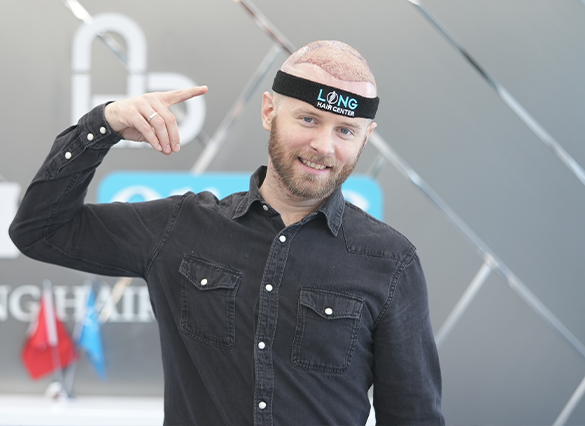
DHI (Direct Hair Implantation)
DHI (Direct Hair Implantation) is not a new technique. In fact, it’s an improved version of FUE hair implantation, encompassing the same procedural steps and outcomes. In a FUE hair transplant, the doctor creates channels over the recipient area using sapphire blades and places the grafts into the opened channels. In contrast, the DHI method employs a tool resembling a ballpoint pen to insert the grafts into the recipient area without creating any channels. This tool is called the Choi pen.Let us examine the process of DHI. A DHI hair transplant is performed using a Choi pen during implantation. This compact device, shaped like an interlocking ballpoint pen, has an outer Teflon coating and is designed to withstand temperatures of up to 130 degrees Celsius. The needle at the end of the pen is used to place the grafts. The needle resembles an injector but is vertical, with serrated endpoints. The serrated ends are designed in this way to facilitate the placement of hair grafts into the needle prior to the transplant.TIn the DHI hair transplant technique, 4 to 6 Choi pens are used, classified by color into red, blue, and white, according to the graft sizes, which are categorized as thick, medium, and thin. This method consists of three main stages:


Die DHI-Methode besteht aus folgendem Prozess:
Haarlinien Design.
Anästhesie.
Extraktion der Transplantate.
Implantation der Transplantate mit Choi-Stiften.


Vorteile:
Implantation zwischen vorhandenen Haaren für Personen, die den Haarausfallzeitraum abgeschlossen haben und über 40 Jahre alt sind
DHI ist vorteilhaft für die Implantation zwischen vorhandenen Haaren ohne Rasur, während FUE nicht so vorteilhaft ist, da es bei dieser Art der Haartransplantation vorhandene Follikel schädigen kann.
Haartransplantation für Frauen.
Unrasierte Haartransplantation.
Suitable for Various Hair Types: DHI can be used for different hair types, including curly or wavy hair, as the precise implantation allows for natural results.

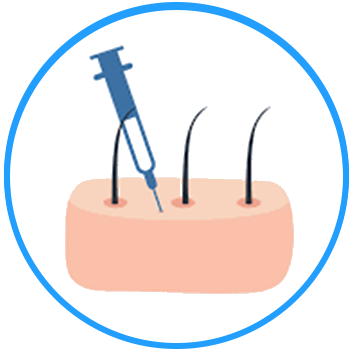
Nachteile:
Begrenzte Anzahl an Transplantaten. Die maximale Anzahl an Transplantaten für die DHI-Haartransplantation beträgt 4.000 bis 4.300, während bei der FUE-Haartransplantation 5.600 oder mehr Transplantate möglich sind
transplantiert.
Teurer als andere Methoden.
Die DHI-Methode ist bei der Bepflanzung großer kahler Flächen mit einer hohen Anzahl an Transplantaten nicht so effektiv, während die FUE-Methode das Maximum erreichen kann
Dichte und Natürlichkeit unabhängig von der Größe der kahlen Stelle.
Extended duration of the process.: Doing DHI takes time because each graft needs to be placed very carefully.
Outcomes Based on Skill: The effectiveness of the DHI method depends a lot on how skilled and experienced the medical team is. This can result in different levels of success when different practitioners use the method.
UNSERE BEHANDLUNGEN
UNSERE TECHNOLOGIEN
DHI
DHI (Direct Hair Implantation) sollte nicht als neue Methode betrachtet werden, sondern als eine modifizierte Form der FUE-Haarimplantation, die dasselbe beinhaltet Prozesse und Ergebnisse. Bei der FUE-Haartransplantation erstellt der Arzt mithilfe von Saphirklingen Kanäle über dem Empfängerbereich und platziert die Transplantate darin die geöffneten Kanäle. Bei der DHI-Methode hingegen verwendet der Arzt ein Werkzeug, das einem Kugelschreiber ähnelt, um die Transplantate in den Empfänger einzuführen Bereich, ohne Kanäle zu erstellen. Dieses Werkzeug wird Choi-Stift genannt.
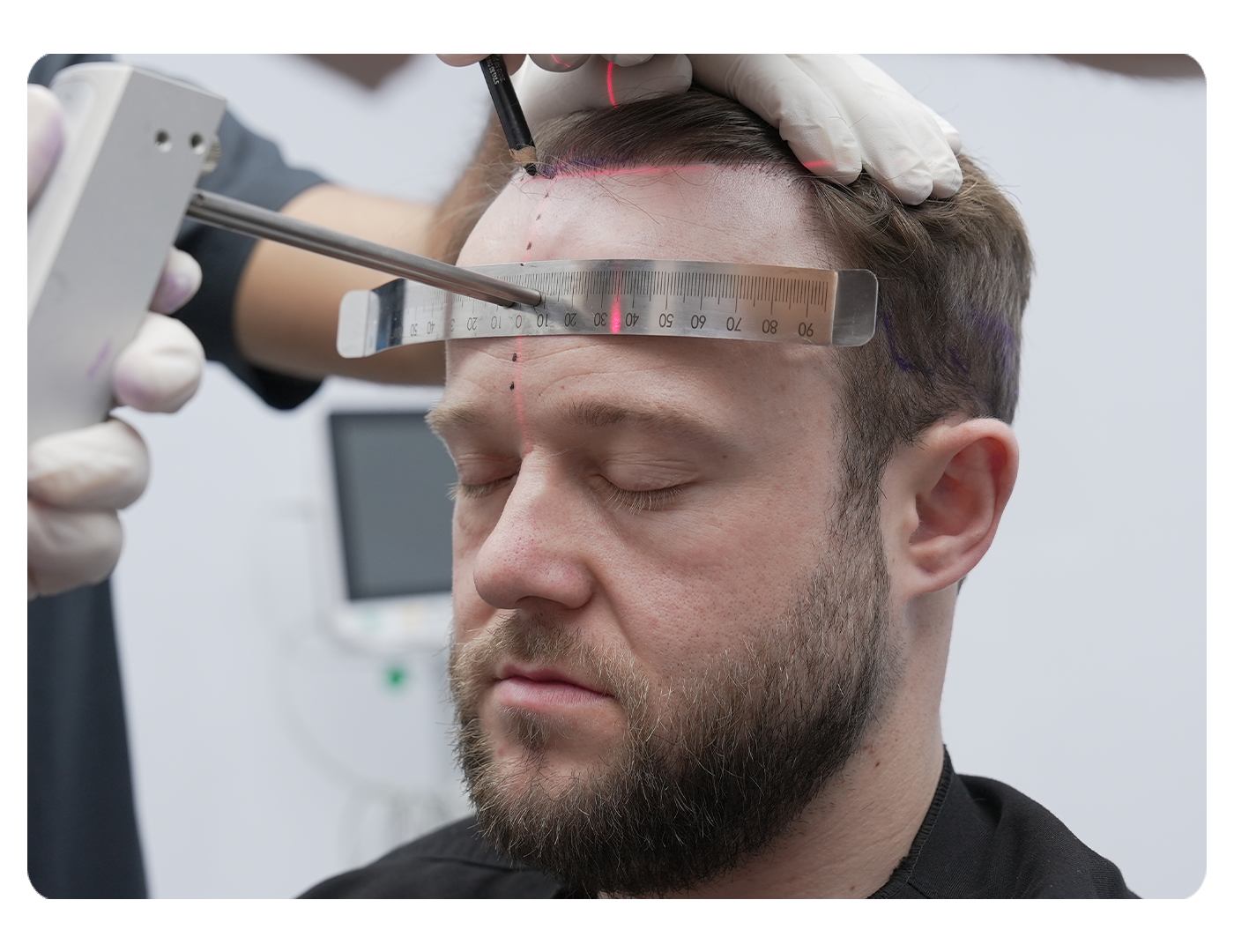
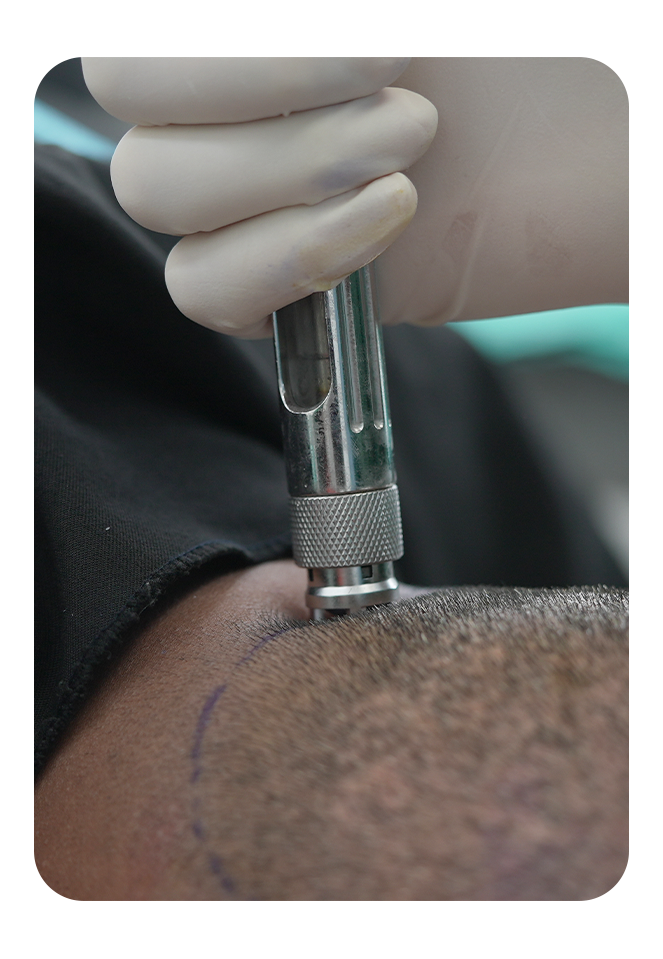
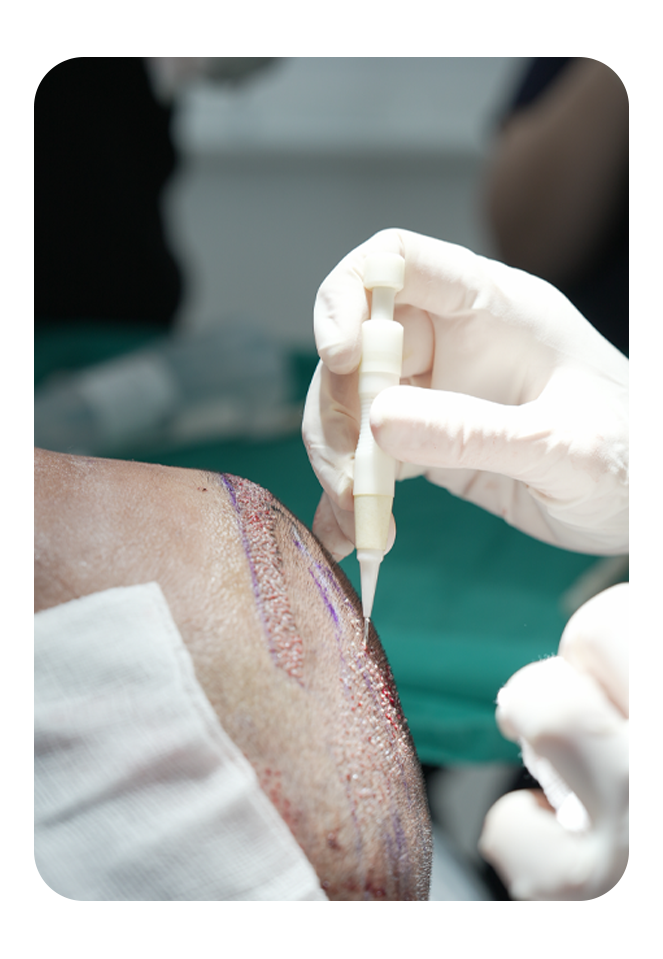
Die DHI-Haartransplantation wird bei der Erstellung der Kanäle mit einem Choi-Stift durchgeführt. Dieses kleine Gerät, geformt wie ein ineinandergreifender Kugelschreiber,
verfügt über eine äußere Teflonbeschichtung und ist auf eine Temperaturbeständigkeit von bis zu 130 Grad Celsius ausgelegt. Die Nadel zeigt auf das Ende des Stifts
Hier werden Transplantate platziert. Diese Nadel ähnelt einem Injektor, ist jedoch vertikal und die Endpunkte sind gezahnt. Die gezackten Enden werden auf diese Weise hergestellt
damit die Haartransplantate vor der Transplantation in die Nadel eingesetzt werden können.
Bei einer durchschnittlichen DHI-Haartransplantation werden 4 bis 6 Implanterstifte verwendet. Die Methode besteht aus zwei Schritten. Der erste Schritt besteht darin, die zu platzieren
Haarfollikel in den Stift. An dieser Phase nehmen ein Spezialist und zwei Assistenten teil und sie muss schnell erledigt werden. Haarfollikel, entnommen aus dem Petri
Die Schalen werden nacheinander in den Stall gestellt. Diese Haarfollikel werden durch Schieben in die Nadel eingeführt.
Im zweiten Schritt werden die in der Nadel platzierten Transplantate transplantiert. Die Nadelspitzen mit den Transplantaten im Inneren werden angefahren
Der haarlose Bereich wird in einem geeigneten Winkel angestochen und die Haut wird mit der Nadel durchstochen. Zu diesem Zeitpunkt wird der Stift von oben gedrückt. Nach dem Haarfollikel
Sobald das Ende der Nadel in das Loch im haarlosen Bereich eingeführt wird, ist die DHI-Haartransplantation abgeschlossen.
Wichtig zu beachten ist, dass wie bei jeder Anwendung auch eine DHI-Haartransplantation von einem Spezialisten durchgeführt werden sollte. Die Größe der gebohrten Löcher
Dabei kommt der Haut eine besondere Bedeutung zu und bei zu großen Löchern ist kein Erfolg möglich.
- Haarlinien Design.
- Anästhesie.
- Extraktion der Transplantate.
- Implantation der Transplantate mit Choi-Stiften.

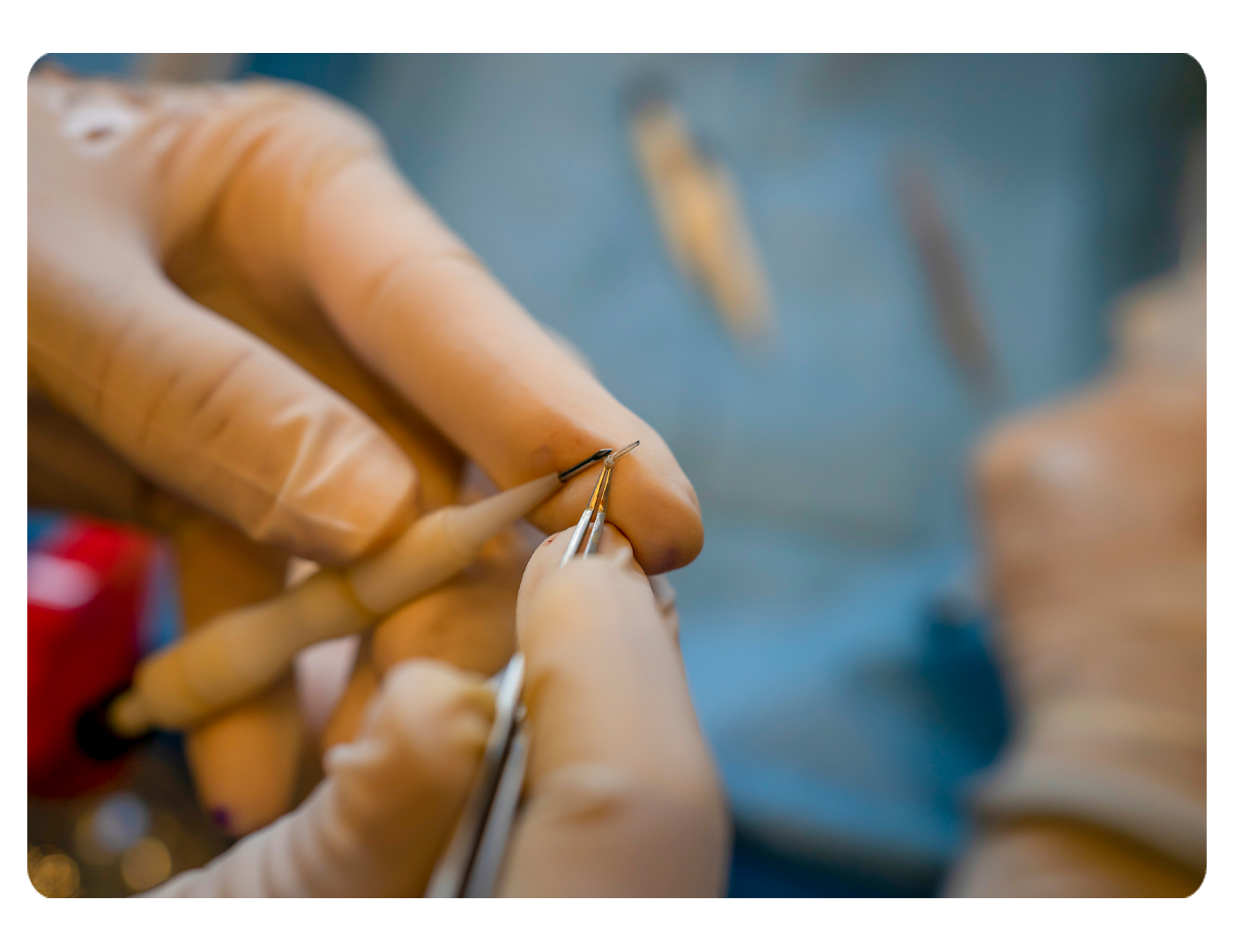
- Implantation zwischen vorhandenen Haaren für Personen, die den Haarausfallzeitraum abgeschlossen haben und über 40 Jahre alt sind
- DHI ist vorteilhaft für die Implantation zwischen vorhandenen Haaren ohne Rasur, während FUE nicht so vorteilhaft ist, da es bei dieser Art der Haartransplantation vorhandene Follikel schädigen kann.
- Haartransplantation für Frauen.
- Unrasierte Haartransplantation.
- Suitable for Various Hair Types: DHI can be used for different hair types, including curly or wavy hair, as the precise implantation allows for natural results.
- Begrenzte Anzahl an Transplantaten. Die maximale Anzahl an Transplantaten für die DHI-Haartransplantation beträgt 4.000 bis 4.300, während bei der FUE-Haartransplantation 5.600 oder mehr Transplantate möglich sind transplantiert.
- Teurer als andere Methoden
- Die DHI-Methode ist bei der Bepflanzung großer kahler Flächen mit einer hohen Anzahl an Transplantaten nicht so effektiv, während die FUE-Methode das Maximum erreichen kann Dichte und Natürlichkeit unabhängig von der Größe der kahlen Stelle.
- Extended duration of the process.: Doing DHI takes time because each graft needs to be placed very carefully.
- Outcomes Based on Skill: The effectiveness of the DHI method depends a lot on how skilled and experienced the medical team is. This can result in different levels of success when different practitioners use the method.
Frequently Asked Questions
The hair grafts are extracted from the backside of the head, which we determine as between two ears and above the neck. The reason for choosing this specific area as a donor (extraction zone) is that the hair grafts in this region are genetically encoded against inherent hair fall. If the extraction process from this region is performed with better quality artistry, hair fall will never occur for a lifetime. Therefore, we take the hair grafts from this region.
The implanted hair may fall out within 2-3 weeks after transplantation. This is a normal process. New hair will begin to grow approximately 3-4 months later, and you can see the final results after 6-12 months. Complete growth can take up to 18 months.
No, the implanted hair generally does not fall out again. Hair extracted from the back of the head is genetically resistant to hair loss and remains permanent. However, existing natural hair may continue to fall out with age, so additional transplantation may be necessary if needed.
The surgery is performed under local anesthesia, so there is almost no pain during the procedure. There may be mild discomfort or swelling after surgery, but this can generally be managed with mild painkillers. Most patients can return to normal activities the day after surgery.
You are welcome to come with your family. There may be an additional charge for companion accommodation, but this is optional. It may vary depending on the accommodation package, so please check the details when making a reservation. Generally, all services are included for one patient.
The operation time varies depending on the number of follicles to be transplanted. Generally, 1000-2000 follicles take 4-6 hours, 2000-3000 follicles take 6-8 hours, and 3000 or more follicles take 8-10 hours. The surgery is completed in one day, including rest time.

 Deutsch
Deutsch
 English
English
 français
français
 italiano
italiano
 Türkçe
Türkçe
 русский
русский
 한국어
한국어


